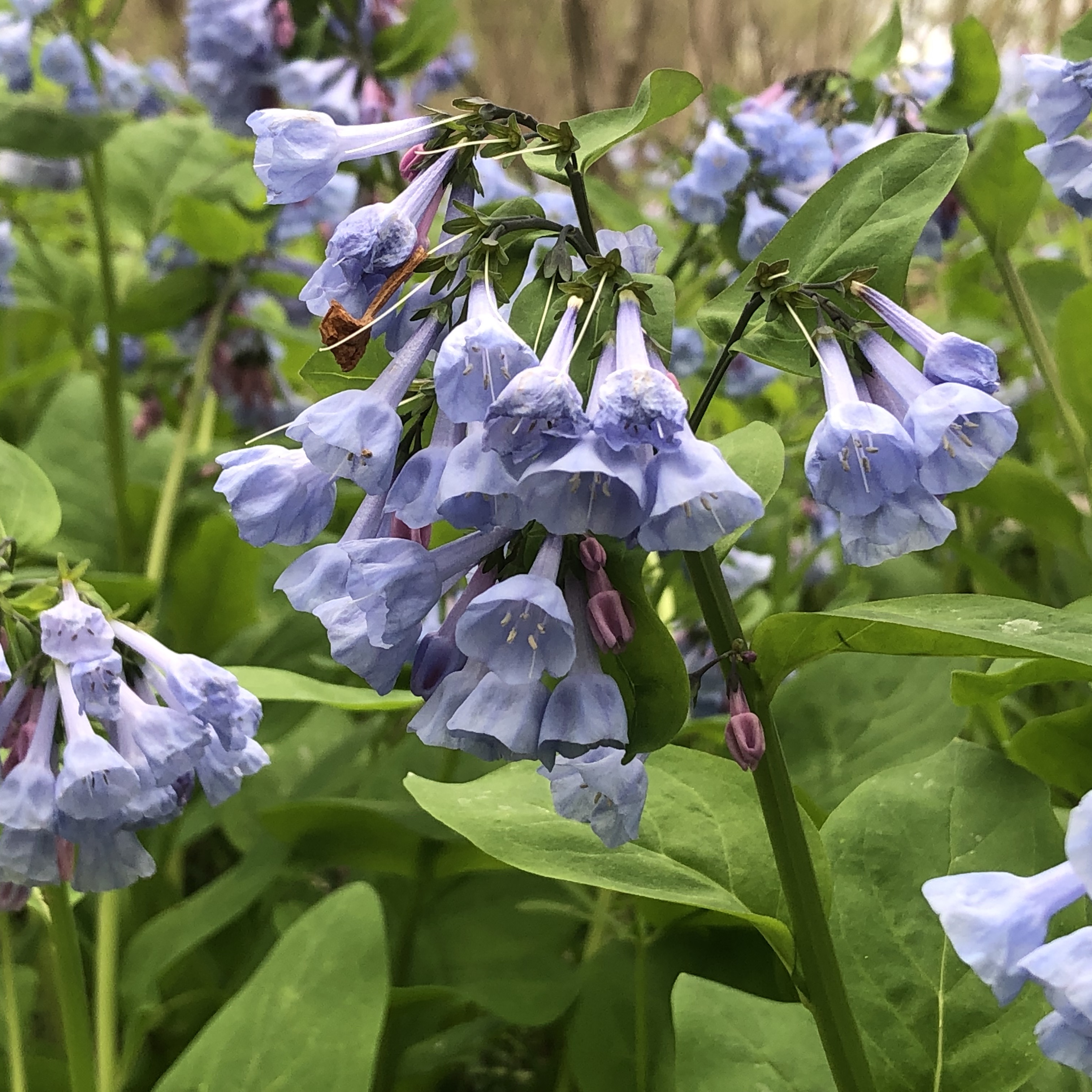Spring is here and we couldn’t be happier!
The forest is coming to life as any snow melts and the temperatures rise. If you know where to go, every year you can see a spectacular bloom of Virginia Bluebells. Or maybe you are out and by luck you find a patch of Virginia Bluebells. They carpet the forest floor with beautiful pink bulbs and blueish purple flowers, creating an amazing experience. They are relatively short lived, so you have to be out at just the right time.
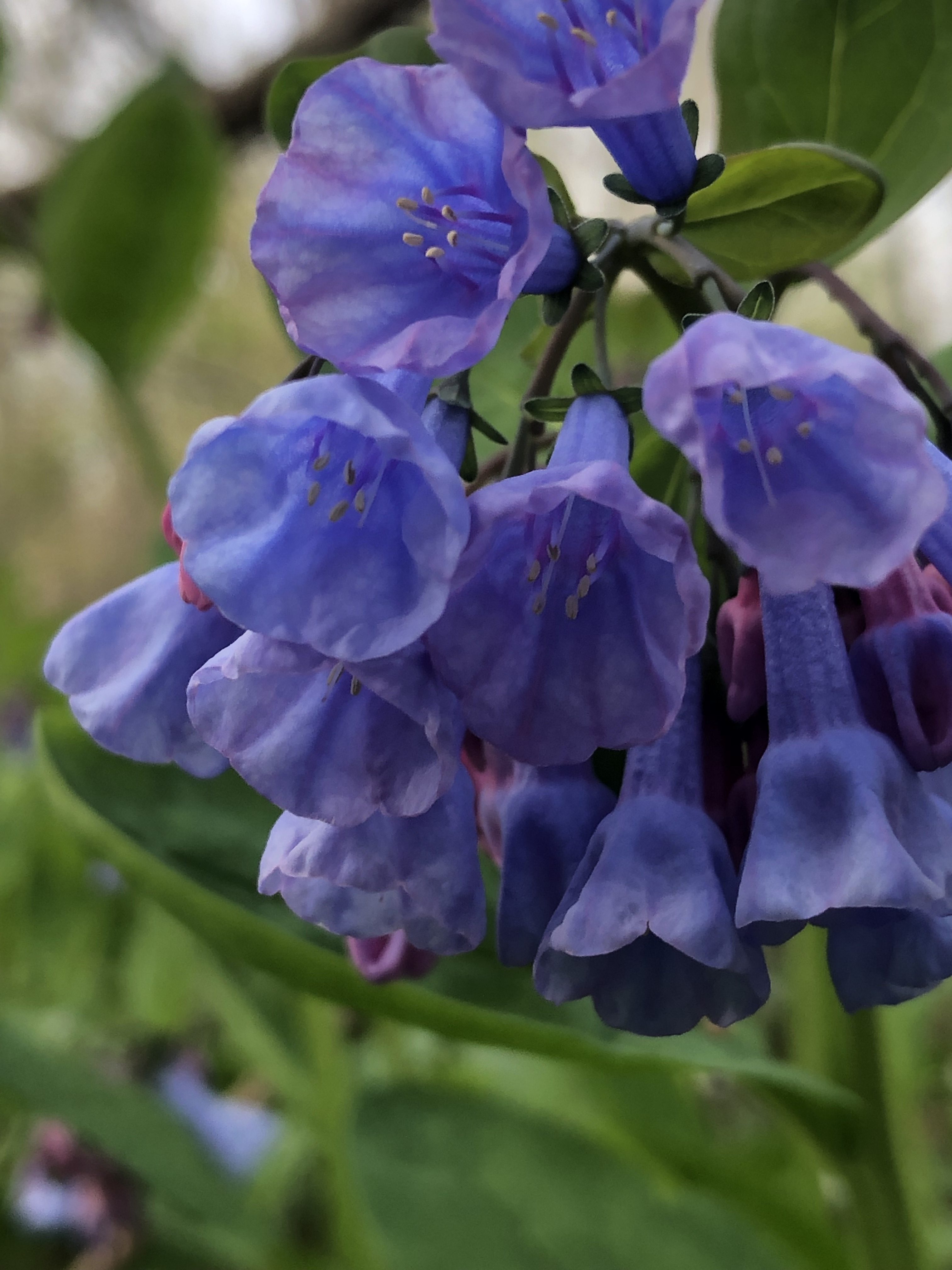
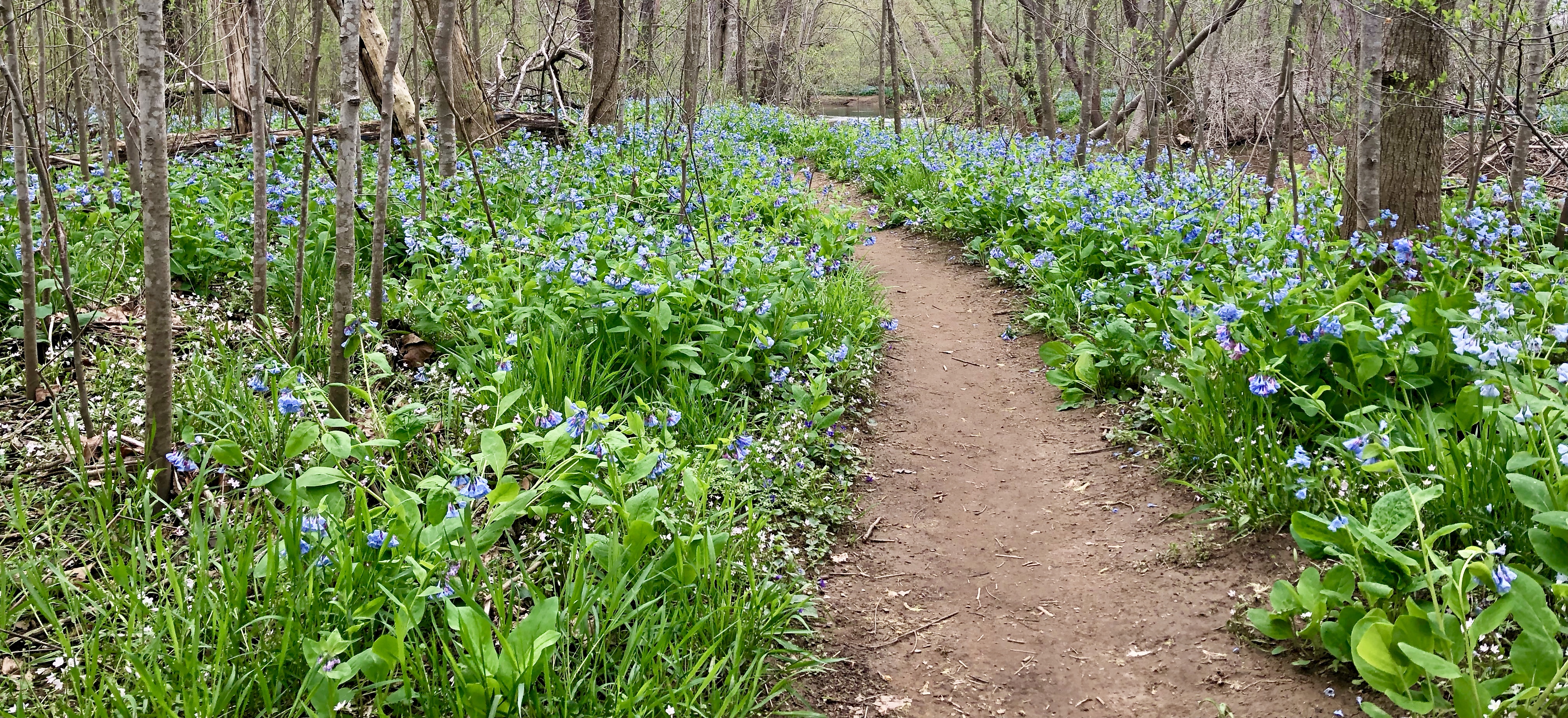
April and May are the prime months to get out and enjoy these flowers. Their color changes as they sway in the wind, the light hits them, and they mature. It is really difficult to capture how beautiful they are in photographs. You have to get out there and see them for yourself! The sun, the time of day, the wind, and the age of the bluebells all impact how they look in real life.
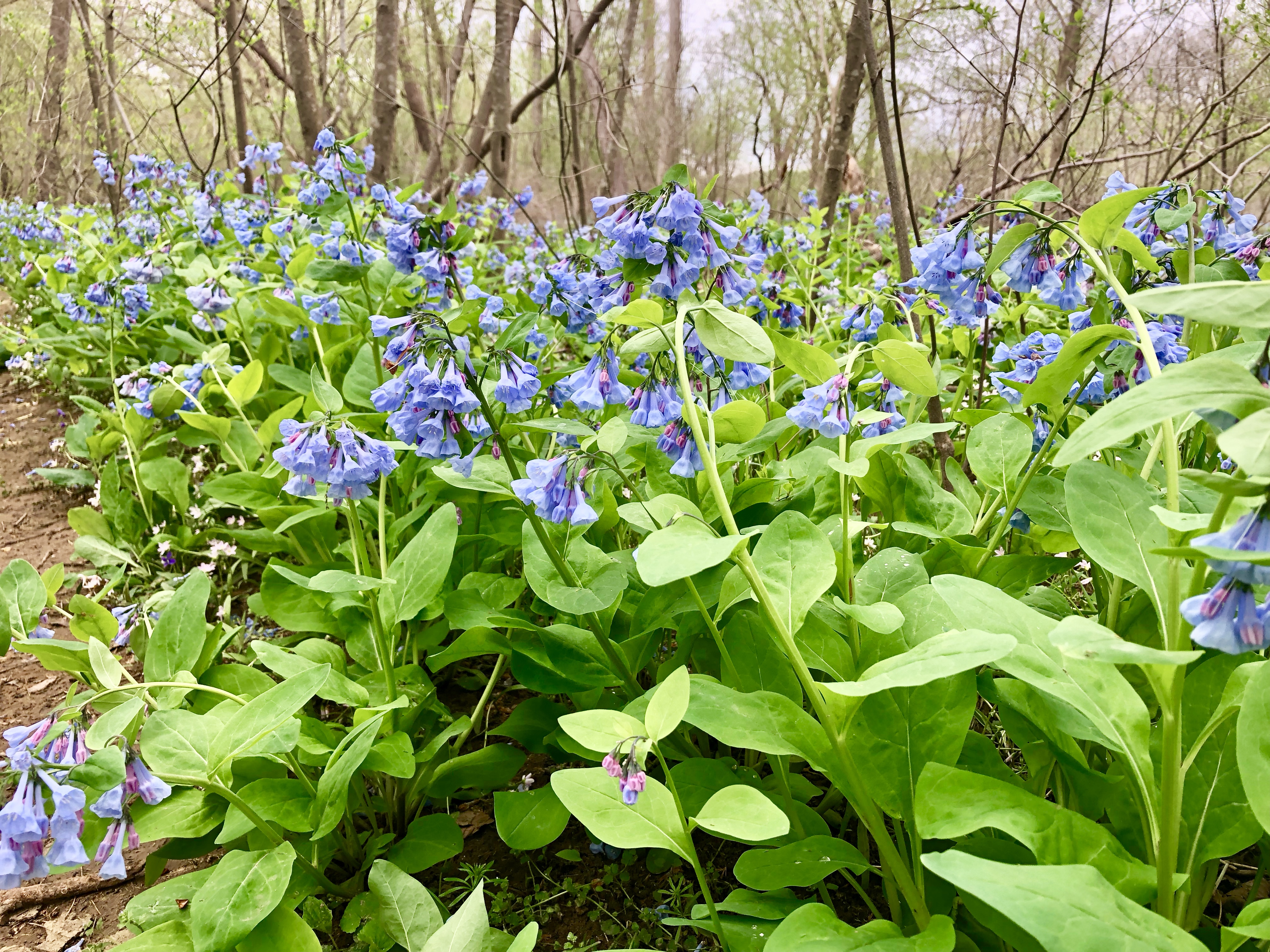
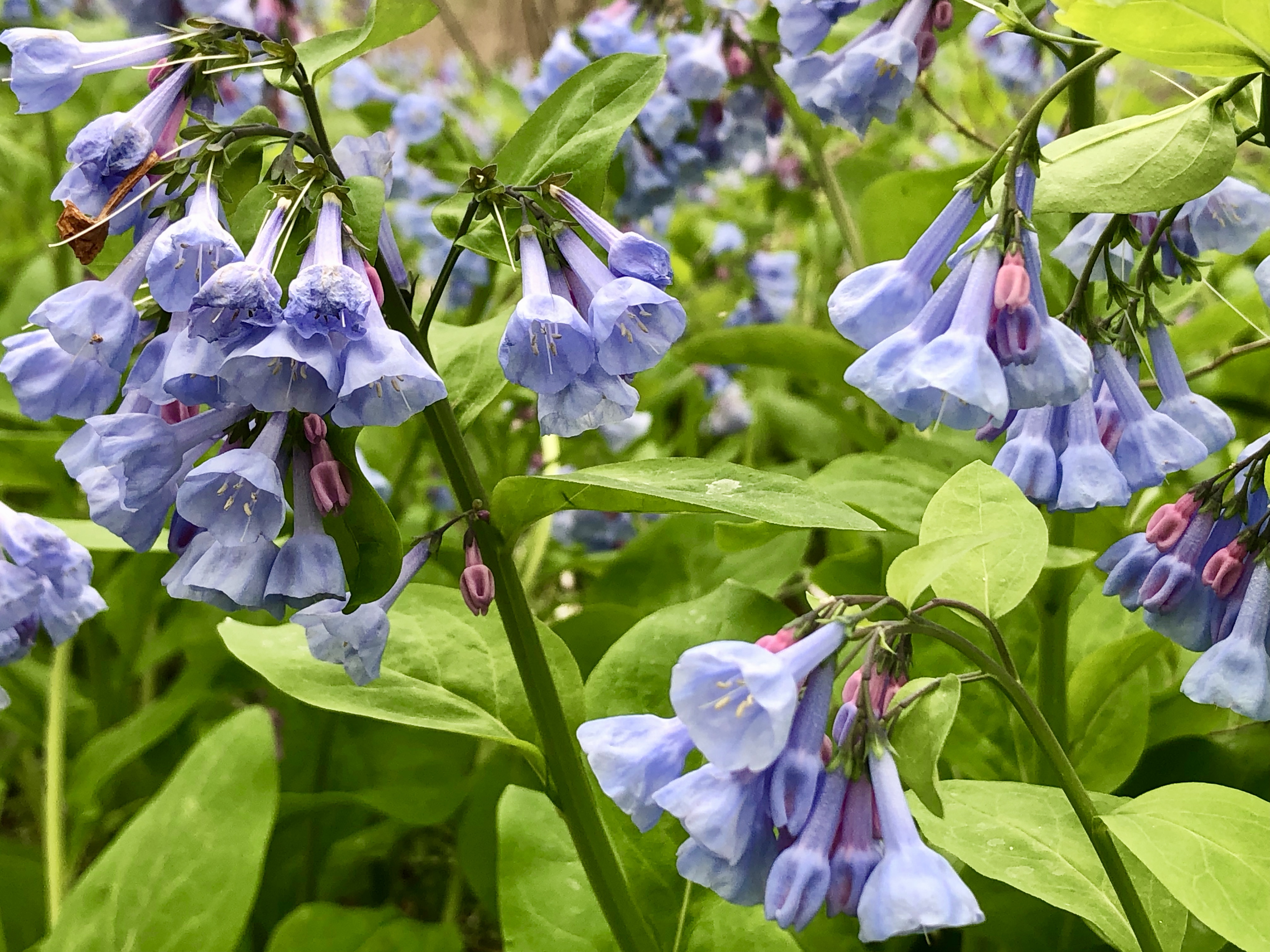
There are several types of Bluebells you might see around Northern Virginia, including English, Spanish, Virginia, and Hybrid Bluebells. Identification can be tricky because many of the Hybrid Bluebells share traits with the other types. We’ll just be looking at the Virginia Bluebells in this post.
The Virginia Bluebell is a hardy plant and likes to grow in low, damp or wet areas where there is some shade. All of these photos were taken in the flood plane no farther than 100 yards from Potomac river.
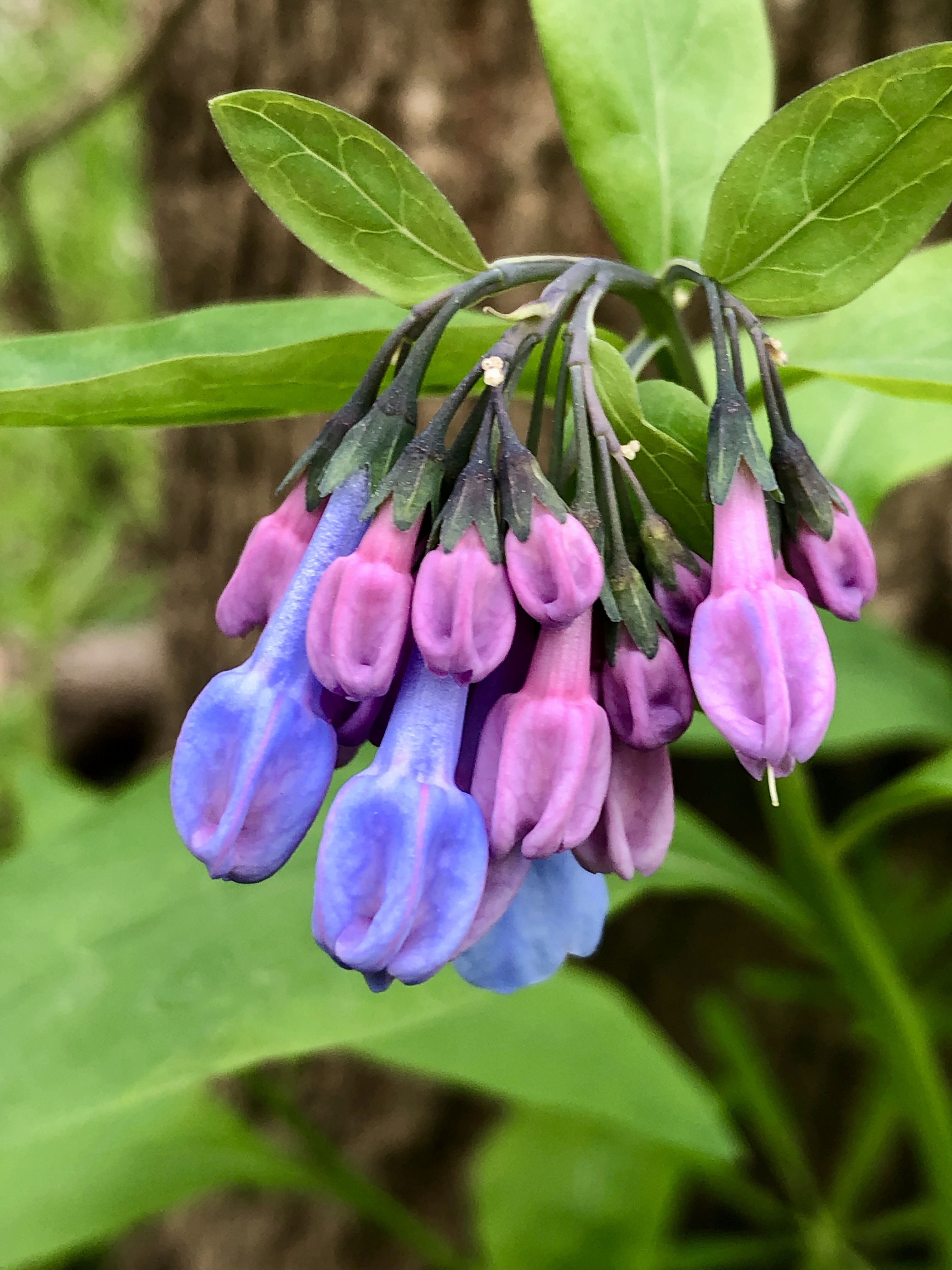
These flowers can be found all around the Northern Virginia area where there are streams and wetlands including Great Falls, Mclean, Sterling and Reston. They grow in clusters from a main stem. The plants range in height from 12 to 18″ depending on the age of the plant and the weather conditions.
Bluebells come in a variety of colors, but light blue and violet are by far the most common. They have a mild, sweet smell to them and are often planted in gardens for their ease of maintenance and pleasant characteristics. These are on the lighter blue side, whereas the ones above are turning more violet. I think soil conditions impact the color, but that’s just a guess.
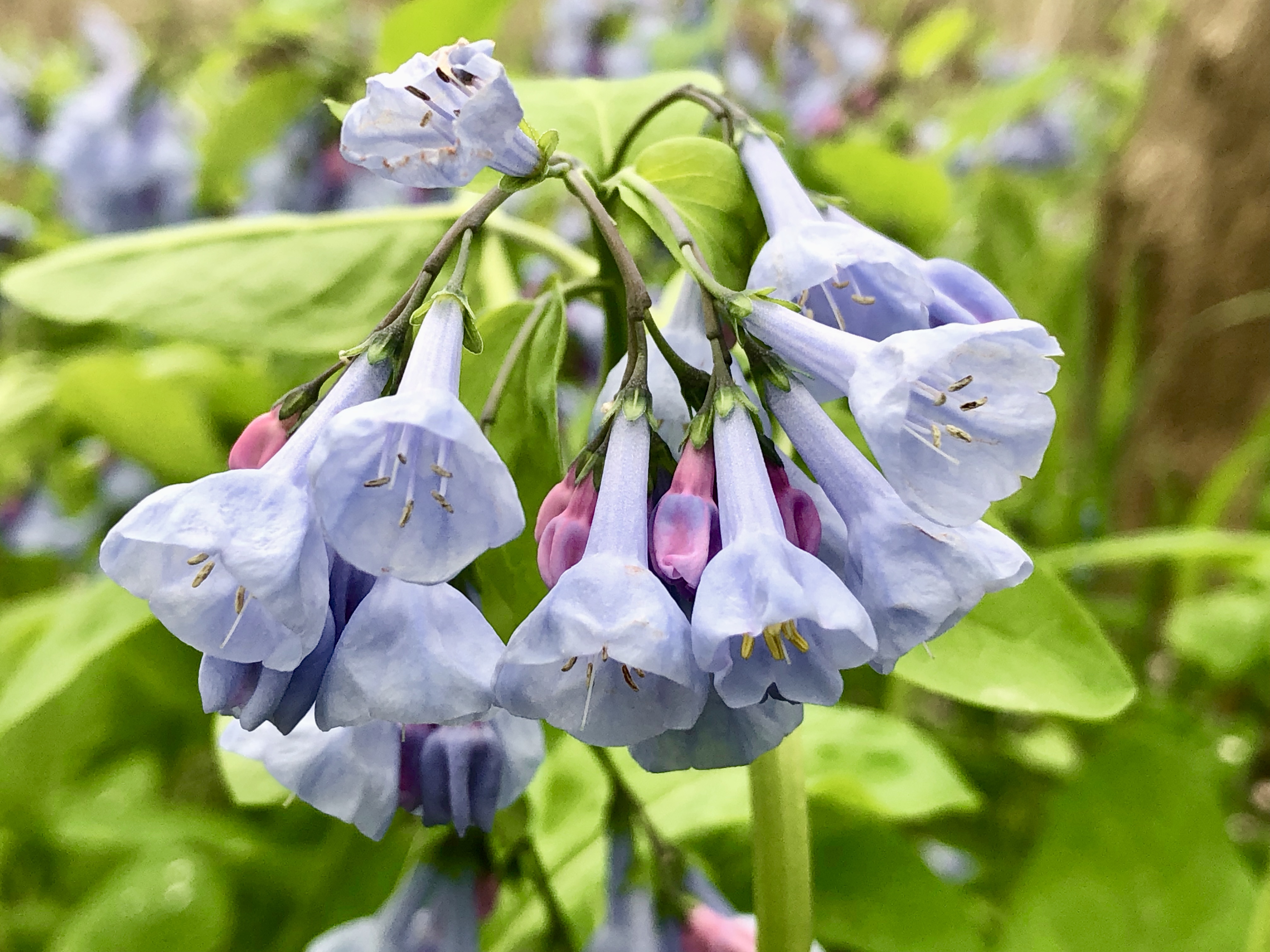
These flowers grow from the east coast and to the midwest, however there are different species that can be found across the country. The Spanish and English plants are not indigenous, but they have been here long enough without any severe negative impacts that they are considered native in a lot of areas. If they do become a problem, they are easy to get rid of. They grow in patches of various sizes.
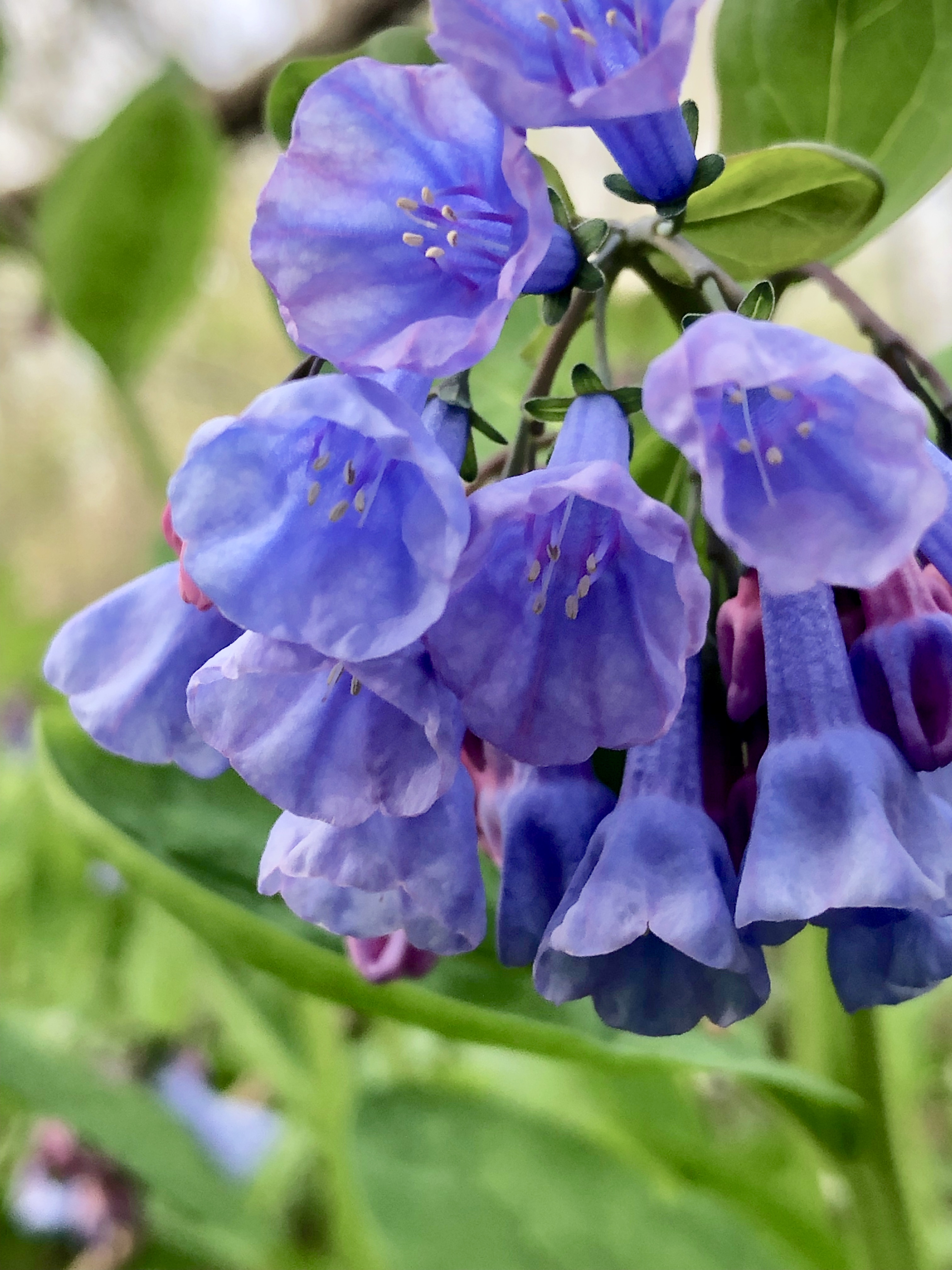

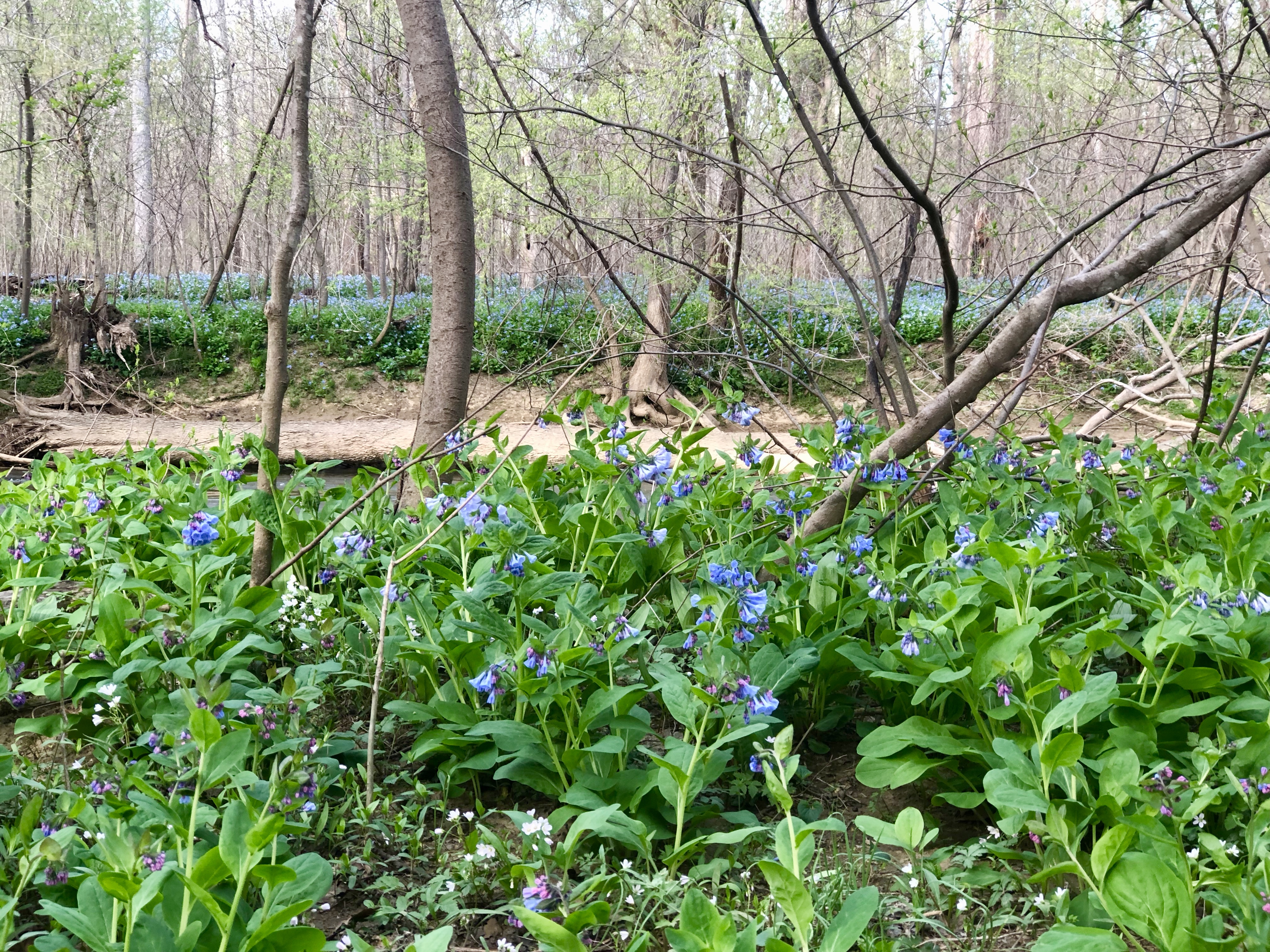
Every Spring we enjoy these little flowers along the river, and we hope that you get a chance to get out there and see them as well!
References:
Lady Bird Johnson Wildflower Center
